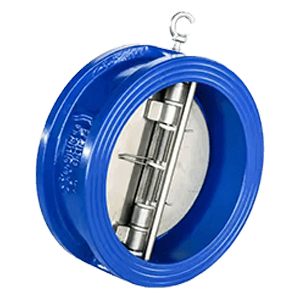In this blog, we’ll walk through the common symptoms of a bad check valve, what causes them, and why choosing a reliable check valve manufacturer like Qingdao I-Flow is essential for your system’s performance and safety.
1. Backflow or Reverse Flow
The most obvious symptom of a failed check valve is reverse flow—when fluid or gas flows in the opposite direction of what’s intended.
What It Means:
-
①The valve disc, flap, or ball may be stuck open or damaged, allowing backflow.
-
②This can lead to contamination, especially in water systems, or pressure imbalance in fuel or hydraulic systems.
2. Unusual Noises: Banging or Hammering
A bad check valve often causes water hammer, which sounds like a loud banging or thudding noise when the valve slams shut.
What It Means:
-
①The spring mechanism or internal parts may be worn.
-
②It indicates improper valve closure or pressure surges due to erratic operation.
3. Leakage When the System Is Off
If a check valve is working correctly, it should seal completely when there’s no forward pressure. A leak during system downtime indicates failure.
What It Means:
-
①Worn or damaged seals, corrosion, or debris inside the valve.
-
②May lead to loss of pressure, fluid contamination, or safety issues in sensitive systems.
4. System Pressure Drops
If you notice unexplained loss of pressure, it could be due to a check valve that no longer maintains system integrity.
What It Means:
-
①The valve fails to hold pressure, often because the disc doesn’t seal properly.
-
②In marine or hydraulic systems, this can compromise performance or lead to pump cycling issues.
5. No Flow or Blockage
Conversely, a stuck-closed check valve can block flow entirely.
What It Means:
-
①Internal blockage due to rust, scale, or sediment.
-
②Worn internal parts causing the valve to jam shut.
-
③May result in pump failure, overheating, or system shutdown.
6. Vibration or Pulsation in Piping
Continuous vibration or pulsing in the pipes might mean a check valve is fluttering—opening and closing too rapidly.
What It Means:
-
①Inadequate sizing, or a damaged spring mechanism.
-
②Causes premature wear and tear on pumps and piping.
Why It Matters
-
①Costly repairs or equipment failure
-
②System contamination or loss of product
-
③Violation of industry standards in marine or industrial environments
How to Prevent Check Valve Failure
-
Choose quality materials (e.g., stainless steel, bronze, brass)
-
Ensure compatibility with pressure, temperature, and fluid type
-
Perform routine maintenance and cleaning
-
Install strainers or filters upstream to protect from debris
Trust a Professional Check Valve Manufacturer
If you’re experiencing issues with check valves, consider upgrading to durable, precision-engineered products from Qingdao I-Flow. With over a decade of experience as a global marine and industrial valve supplier, we provide:
-
①Swing check valves, ball check valves, wafer type check valves, and more
-
②High-performance materials: stainless steel, cast iron, bronze
-
③Third-party certifications: CE, WRAS, DNV, ABS
-
④Sizes ranging from DN15 to DN600+
Post time: Jun-21-2025

